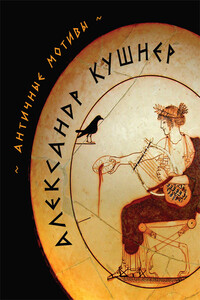4. The use of moving iron-vane meters must be restricted to the .... a) voltage for which they are designed; b) frequency for which they are designed; c) current for which they are designed.
A-C Indicating Meters
The moving iron-vane type is the most common a-c meter. In ii induced eddy currents are used to produce magnetic force on a structure bearing a pivoted pointer and a thin iron element called a vane. The vane has no coil. The stationary magnetic field is* produced by a single current-carrying coil surrounding both the fixed metal element and the pointer movement. This coil is so arranged that its own field induces a field in the moving vane and in addition generates attractive or repulsive magnetic forces with respect to its own self-produced magnetic field. Deflection is basically proportional to the current through the main coil.
Moving iron-vane meters usually have relatively low impedance and are simple and inexpensive. They measure either voltage or current, but their use must be restricted to the frequency for which they are designed.
Rectifier type meters utilize PM d-c movements actuated by current developed from rectifying the applied a-c being measured. Rectifier elements mounted within the meter case may be copper oxide, selenium, germanium, or silicon. The developed d-c is proportional to the applied a-c while the rectifiers and associated circuitry are designed for operation over as wide a band of frequency as possible.
Hometask'. Ex. 10, 15, 21.
The third class period
22 3
Listen to the sentences and define in each of them the meaning of the word “common”.
1. In common with other students he had little time. 2. The British Parliament has two Houses: the House of Commons and the House of Lords. 3. These motors have nothing in common. 4. How do you like this meter? —Well, it’s nothing out of the common. 5. Your idea is something out of the common.
23 4
Listen carefully to the tape-recorded text and render it in English.
The wattmeter conventionally a 60-cycle power meter is not frequently used in the modern electronic laboratory. This is because phase differences are difficult to handle, and because power consumption frequencies have a different significance and are usually not measured by direct-reading meters,
Briefly, in 60-cycle measurements the wattmeter has a dynamometer movement, load current is sent through one coil and load-proportional voltage produces a current which is sent through the other. Phase differences between the two inputs reflect themselves in the repulsive or attractive forces between the coils, and a true reading of power is given by the final deflection.
24 6
Fulfil or explain the following:
1. Name the basic electrical measuring instruments (10).
2. Show a simple drawing of ammeter and voltmeter connections to a circuit.
3. Give some characteristics and applications of the most common a-c meter.
25 5
Record your answers on a tape.
1. What methods are commonly used in electrical service work to determine if the circuits of an equipment are operating properly?
2. When do they use a watt-hour or kilowatt-hour meter?
3. What is most essential in servicing and maintaining electrical equipment?
4. What advantage does a PM moving coil meter have over an iron-vane meter?
26 7
Prepare a) short talk with your fellow-student on basic electrical measuring instruments. Use ex. 24, 25. Then record your dialogue.
27 4
Solve these two problems.
1. Suppose the ammeter scales reads 1.9 amp., the voltmeter scale reads 2.4. V. How much is the value of resistance in the measured circuit?
2. Suppose the ohmmeter scale reads 75 ohms, the voltmeter scale reads 220 V. How much is the value of current in the measured circuit?
28 9
Practice pronunciation. Open your books and repeat after the speaker in pauses 3 paragraphs of the recorded text “Basic Electrical Measuring Instruments”. Thea close your books and do the same with paragraphs 4—7.
29 1
What is the name of this device?
This device measures the frequency of alternating current. It consists of a tuned circuit calibrated in frequencies. It can show maximum current when; the tuned frequency of the circuit is the same as the frequency of the voltage or current being measured.



